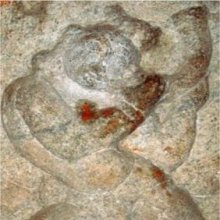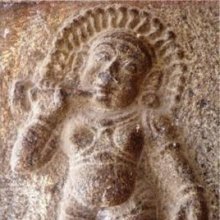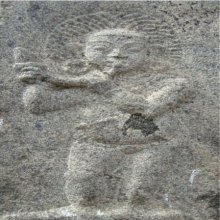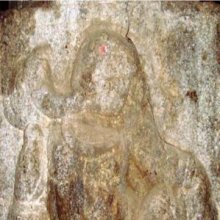Performance: 1 definition
Introduction:
Performance means something in the history of ancient India. If you want to know the exact meaning, history, etymology or English translation of this term then check out the descriptions on this page. Add your comment or reference to a book if you want to contribute to this summary article.
Images (photo gallery)
(+33 more images available)
India history and geography
Source: Singhi Jain Series: Ratnaprabha-suri’s Kuvalayamala-katha (history)Performance (of Dramas) in ancient India was part of celebrations during the “grand festival” (Mahotsava) of the coronation of a crown prince (yuvarāja-abhiṣeka), as depicted in the Kathās (narrative poems) such as Uddyotanasūri in his 8th-century Kuvalayamālā (a Prakrit Campū, similar to Kāvya poetry).—Page 199: Here is described yuvarāja-abhiṣeka-mahotsava when the city of Ayodhyā put on gala appearance by means of beautifying streets, [...] making offerings on the cross roads, beginning dramatic performances, hoisting of the lion banners, installing canopies, cloth pieces were being torn in proper pieces pālī for being wrapped round the post, pendants like the Kaṭisūtra ornaments were hung from the ceilings of doorways and walls of the houses, the great jewels were being taken out and put on show in the treasury [...]”.

The history of India traces the identification of countries, villages, towns and other regions of India, as well as mythology, zoology, royal dynasties, rulers, tribes, local festivities and traditions and regional languages. Ancient India enjoyed religious freedom and encourages the path of Dharma, a concept common to Buddhism, Hinduism, and Jainism.
See also (Relevant definitions)
Ends with: Auspicious performance, Avoidance And Performance, Dramatic performance.
Full-text (+1839): Kriya, Ninayana, Prayoga, Anushthana, Vihiti, Mridanga, Dushkara, Japajapya, Acarana, Kiriya, Siddhasadhana, Anukarsha, Saukarya, Jatimatra, Abhinaya, Corakama, Karmayoga, Hastakriya, Avakriya, Kamyakarma.
Relevant text
Search found 323 books and stories containing Performance; (plurals include: Performances). You can also click to the full overview containing English textual excerpts. Below are direct links for the most relevant articles:
Gati in Theory and Practice (by Dr. Sujatha Mohan)
Practice of dance forms in temples < [Chapter 4 - Practice of Gati]
Technical terms seen in Uparūpakas < [Chapter 3 - Application of gati in Dṛśya-kāvyas]
Research Methodology < [Introduction]
Puppetry in Assam (by Gitali Saikia)
Characteristics of Folk drama < [Chapter 1]
Chapter 5: Comparative Study Of Indian Puppet And Assam’s Puppet
Folk Theatre (a): Kamrupia Dhulia < [Chapter 6]
Vernacular architecture of Assam (by Nabajit Deka)
Vernacular Architecture and Folk Performing Arts < [Chapter 9]
Architecture (e): The Courtyard (Chotal) < [Chapter 3]
Folklore and Vernacular Architecture of Assam: A Scrutiny < [Chapter 9]
Manusmriti with the Commentary of Medhatithi (by Ganganatha Jha)
Verse 5.97 < [Section IX - Other forms of Impurity]
Verse 11.7 < [Section II - The Brāhmaṇa’s Responsibilities and Privileges regarding Sacrificial Performances]
Verse 3.196 < [Section XI - Origin of the Pitṛs and the Mode of Worshipping them]
Brahma Sutras (Ramanuja) (by George Thibaut)
Sutra 3.3.41 < [Third Adhyaya, Third Pada]
Sutra 3.3.48 < [Third Adhyaya, Third Pada]
Sutra 3.4.41 < [Third Adhyaya, Fourth Pada]
Yakshagana: Origin And Growth < [January 1958]
Similarities Between Bhavai And Folk Art Forms < [April – June, 1999]
Pilgrimage to Beauty < [July – September, 1986]
Related products
(+9 more products available)











